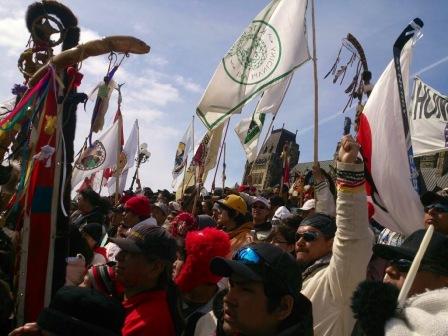 YASMIN PARODI / TORONTO /
YASMIN PARODI / TORONTO /
It’s a history that has been hidden from Canadians, but as a famous quote says, “three things cannot be long hidden- the sun, the moon, and the truth”.
‘The Nishiyuu Walkers’ First Nation youth arrived in Ottawa on Monday March the 25th after walking 1,600 km inspired by the Idle No More indigenous rights movement in Canada – which has captivated global attention, from the people of the Andes to the Rocky Mountains. It is a sign of hope for indigenous people all over the world.
The movement also may be Canada’s last hope for democracy.
The journey began with six Cree youth from Whapmagoostui, Northern Quebec in -54 degree temperatures. The youth braved freezing temperatures, stating that at times it was so cold that their hats turned into helmets. They slept together huddled in tents and bonded with each other, during their physically and emotionally tough journey. Many had to bandage blistered feet.
For what reason did they go through all this?
The journey has united First Nations across Canada who demand that their people, their treaties and their land be respected by the government of Canada.
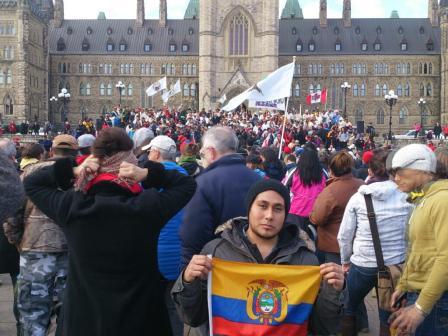 In 2012 the Conservative government passed a number of controversial omnibus budget bills – which is the cramming of many unrelated amendments all in one single bill that allows as little intervention and debate as possible. This undiplomatic strategy altered environmental protection, scientific research and even immigration laws all in one sweep. In particular, last year’s omnibus bills negatively affect the lives and traditional practices of the Native Peoples of Canada, and illegally violate treaties signed by the Crown – prompting the creation of Idle No More.
In 2012 the Conservative government passed a number of controversial omnibus budget bills – which is the cramming of many unrelated amendments all in one single bill that allows as little intervention and debate as possible. This undiplomatic strategy altered environmental protection, scientific research and even immigration laws all in one sweep. In particular, last year’s omnibus bills negatively affect the lives and traditional practices of the Native Peoples of Canada, and illegally violate treaties signed by the Crown – prompting the creation of Idle No More.
We have seen dramatic changes to water protection acts which remove nearly all protection to bodies of water in Canada for economic reasons (which lay beneath and in many Native communities). The largest of which are the oil sands, unconventional oil known as ‘bitumen’.
Indigenous rights are legally recognized by the United Nations Declaration of the Rights of Indigenous Peoples. James Anaya, the special rapporteur on the rights of Indigenous peoples, says the [Canadian] federal government continues to ignore his year-old request to visit Canada to investigate the “human rights situation of Indigenous peoples,” according to a Feb. 20 letter he sent to the Union of BC Indian Chiefs (UBCIC)
What does this have to do with the arrival of the Nishiyuu to Parliament Hill?
The youth shared from their hearts, their personal stories and reasons for embarking on this journey, the quest for reconciliation and healing of a people who have been cheated and oppressed since first contact- like many natives worldwide, the difference being the treaties which legally bind all Canadians and First Nations. Many spoke, in their languages, of the awful living conditions on reserves, lack of education, lack of safe drinking water, high suicide rates, high rates of violence against indigenous women and discrimination faced by Natives. Third world conditions are not what come to mind when one thinks of Canada, but it is a reality endured daily by the original people, the protectors of this land.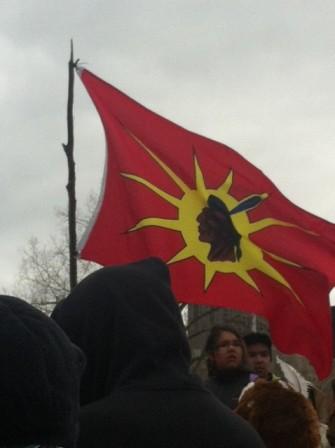
Native people have been calling on Canadians to join them in solidarity as the changes taking place politically affect the lives of all future generations, Canadian, immigrant and aboriginals as Canada’s vast natural resources are being exploited and poisoned at an alarming rate. A poster read this weekend, “Native issues are every ones issues.”
On their journey, the group grew in size, picking up supporters from the Cree and Anishinabeg communities until finally reaching Ottawa with 270 walkers.
An internet livestream of the welcoming on Monday reached 30,000 viewers in over 6 different continents. What is happening in Canada is truly the beginning of a global change. All eyes are on Canada.
Monday at noon, the Nishiyuu marched onto to Victoria Island, a sight of sacred significance for First Nations and the place where Chief Spence had her 6 week long hunger strike this winter. The group was welcomed by the cheers and warm embraces of hundreds of Native and non-natives, families and friends.
Energy and emotions were high as a sacred fire was lit by an Algonquin Firekeeper. Prayers and songs echoed through the streets of Ottawa as the Nishiyuu and their supporters marched together in unity as one tribe, one nation, one voice to Parliament Hill where they were met by thousands more supporters.
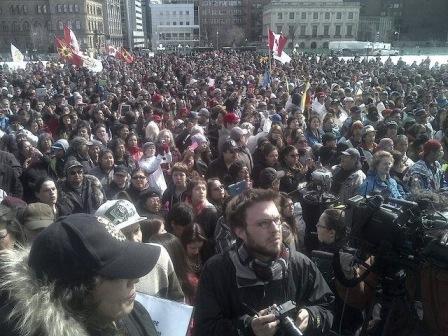 Once the unified walk to Parliament began, the cloudy sky and cold weather that had persisted all morning was suddenly parted by a bright blue sky. One of the attendees said with tears, “this is a message from the Creator, he is with the Nishiyuu and our people today”.
Once the unified walk to Parliament began, the cloudy sky and cold weather that had persisted all morning was suddenly parted by a bright blue sky. One of the attendees said with tears, “this is a message from the Creator, he is with the Nishiyuu and our people today”.
National Chief Shawn Atleo from the Assembly of First Nations in his speech acknowledged the arrival of eagles in the sky over parliament, saying it is “a message from the Creator and the ancestors” that the youth have started something great for their generation.
A young walker who is 12 years old said, “every step I took was a prayer for Mother Earth and her people”.
Other speakers included Chief Theresa Spence, NDP federal leader Thomas Muclair, and representatives from the Council of Elders.
Our Prime Minister Stephen Harper unfortunately missed the long awaited arrival of the Nishiyuu youth walkers, as he decided to welcome Pandas at the Toronto Airport that day instead.
The original Nishiyuu walker David Kawapit said through his interpreter, “There are no words to describe how I feel. This is not the end, this will continue, and we started with a walk.” 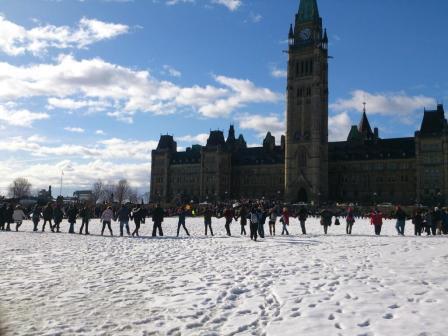
The Idle No More movement is educating Canadians of the complex truth of what actually happened to the First Nations of Canada. The Nishiyuu are a symbol of strength and unity, desperately needed by native youth in these politically oppressive times.
It’s time for us to learn the real history of Canada and form a new relationship with the First Nations based on mutual respect and peace.

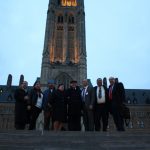
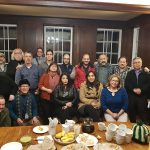

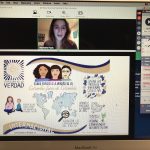
Be the first to comment on "Canada: it’s time for a new relationship with the First Nations"